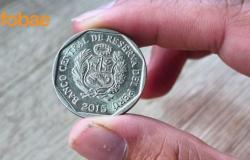Zero kilometer car sales in April were again the best since 2018. The 54,000 vehicles were exceeded in total, and the operations of private or commercial use cars such as vans and pick-up, almost 51,000 units reached.
The growth in relation to March was 11.6% and compared to February 21.1 percent. Sector executives already speak, although in private, of a “600,000 car apartment for the end of the year.” They officially prefer to be more cautious and talk about 580,000 units.
To make this at the speed that occurred, a combination of measures generated the stage: opening to the unrestricted importreduction of Payment deadlines outside and elimination of country tax and of the first scale of Internal tax.
The elimination of the stocks still does not impact, will do so in the coming months, when companies can import and pay at the time if they have it.
But Sales growth is not driven by national cars, but by imported cars. This trend, which began in mid -2024, was strongly accentuated in the first four months of the year, and after closing the fourth exercise, The Argentine industry has 45% of the market, the Brazilian 46% and the rest of the countries the remaining 9 percent.

“You don’t have to worry, because It is preferable to have 45% of a 600,000 cars market that 55% of 380,000 ″, told Infobae Martin Pinn Jupuripresident of Stellantis Argentina and Adefathe association that brings together Argentine manufacturers.
It seems difficult to understand looking at the top ten of the sales ranking, where 7 are national and 3 Brazilians. The account is better understood when the look at the first 20, because there are 9 national products, 10 are Brazilian and one is Chinese (Ford Territory). And everything is confirmed by expanding the list to the 30 best -selling cars, where there are only 11 national industry, 17 come from Brazil, 1 from China and 1 from Mexico (Ford Bronco Sport).
However, for Argentine car factories it is not bad news that Only 11 of 30 best selling are cars produced in the country. The remaining 19 are imported by the same brands, and if the look is extended to The 50 best -selling cars, only 2 are models brought by brands that do not manufacture locally. This is Hyundai HB20 in 42nd position and the Honda HR-V in the following position.
What is happening is normal. More offer is reduced by market proportion for each model. That is generality and logic. Some lost more and others less. Among the first are the Pick-up, because they have less competition from abroad. In SUVs and compact cars, the opposite happened.

The best -selling Argentine vehicle last year was the Peugeot 208. In December, 2024 closed with 7.6% of the Argentine market. Today, although it is still the car that sold the largest number of units in the first four months of the year, it closed April with 6.5 percent.
The cases are repeated. The next national manufacturing vehicle is the pick-up Toyota Hiluxwhich ended 2024 with 7.4% of the total vehicles sold locally, and today is 6.6%. Then comes the Fiat Cronosrecently launch its new version, which ended 2024 with 7.2% of the market and today has 6%. The pick-up Ford Ranger Also, it went from 5.9% to 4.6 percent. The exception that maintained its market percentage was the fifth Argentine model, the VW amarokwhich ended last year with 4.7% and four months later it maintains that market proportion.
In the importeddepended on the policy of each brand. While some companies began to bring cars in interesting volumes already last year, others preferred to wait for payment standardization.

Thus, there are cases in which the phenomenon of Argentine cars to lose market percentage was repeated, although in a lower proportion. This is the case of Toyota Yariswhich ended last year with 5.3% of market share and after April accumulates 4.5%. It also happens to Volkswagen Polowhich went from 4.1% to the current 3.6%, or to Toyota Corolla Crosswhich had 3.9% and now 3.2%.
Other models grew with the new payment and import policy. He Chevrolet Onix It went from having 1% to the current 1.9%, almost double. Similar was those of the Ford Territory: It ended 2024 with 1.5% and today has 2.2 percent. Also the VW T-Crosswhich suffered restricted imports and closed the year with 1.4%, now it is already 2.3%. Cases multiply, such as The C3 Aircross C3which went from 0.9% in 2024 to 1.8% in four months from 2025.
To these figures, the effect of the Arrival of models They have no valid comparison with 2024, but part of the 2025 market will be distributed. They are the Peugeot 2008 of National Production, and the Brazilians Renault Cardian, Citroën Basalt, Fiat Fastback, Hyundai HB20and even the great novelty that is expected for this year, the Toyota Yaris Cross.







